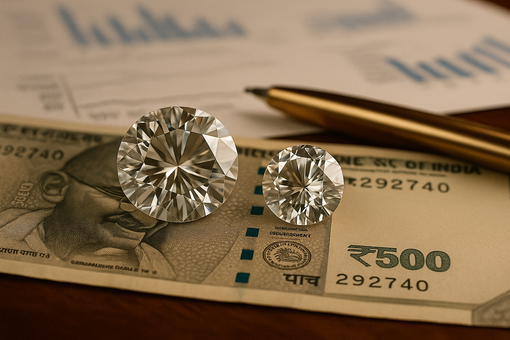
- Article published at:
- Article author: Nidhi J
- Article comments count: 0
Drawer menu
When you look at a sparkling lab-grown diamond in a ring, it’s easy to admire its brilliance without thinking about where it came from. But behind every lab-grown diamond is a fascinating journey—one that blends science, innovation, and artistry. In this blog, we’ll take you through the step-by-step journey of a lab-grown diamond—from its creation in the lab to the moment it shines in your jewelry box.
Every lab-grown diamond starts with a tiny diamond seed, usually a thin slice of a natural or previously grown diamond. This seed acts as the foundation upon which layers of carbon are added. Think of it like planting a seed in soil—the right conditions help it grow.
There are two main methods for growing diamonds:
HPHT (High Pressure, High Temperature): This method replicates the natural conditions under which diamonds form in the earth’s mantle. The seed is exposed to high pressure and intense heat, allowing carbon to crystallize around it.
CVD (Chemical Vapor Deposition): A more modern method where the diamond seed is placed in a chamber filled with carbon-rich gases. When heated, these gases break down and deposit carbon atoms onto the seed, layer by layer, forming a diamond crystal.
Both methods result in real diamonds—identical in chemical, physical, and optical properties to mined diamonds.
Once the rough lab-grown diamond is grown, it goes through the same process as natural diamonds:
Planning: Experts use 3D technology to decide the best way to cut the diamond to maximize brilliance.
Cutting: Skilled artisans shape the diamond using precision tools.
Polishing: The diamond is polished to perfection, bringing out its fire, brilliance, and sparkle.
This stage transforms a raw crystal into the dazzling gemstone you recognize.
Lab-grown diamonds are graded by the same standards as mined diamonds: the 4Cs (Cut, Color, Clarity, Carat weight). Reputable labs like IGI and GIA certify lab-grown diamonds, ensuring transparency and trust for buyers.
Once the diamond is ready, jewelers set it into rings, necklaces, or other designs. This is where craftsmanship meets creativity. Whether you choose a classic solitaire or a modern halo setting, the diamond’s journey is completed when it finds its home in a piece of fine jewelry.
Finally, the diamond reaches you—the wearer. What makes lab-grown diamonds truly special is not just their beauty, but also their story:
They are ethical, free from conflict mining.
They are sustainable, with a smaller environmental footprint.
They are affordable, offering larger stones at better prices compared to mined diamonds.
The journey of a lab-grown diamond is one of innovation, responsibility, and timeless beauty. From a tiny seed in a lab to a sparkling gem in your jewelry box, these diamonds symbolize the future of fine jewelry—where luxury meets sustainability.
✨ Whether you’re shopping for an engagement ring or a timeless keepsake, choosing a lab-grown diamond means owning a gem with a remarkable journey and an even brighter future.
